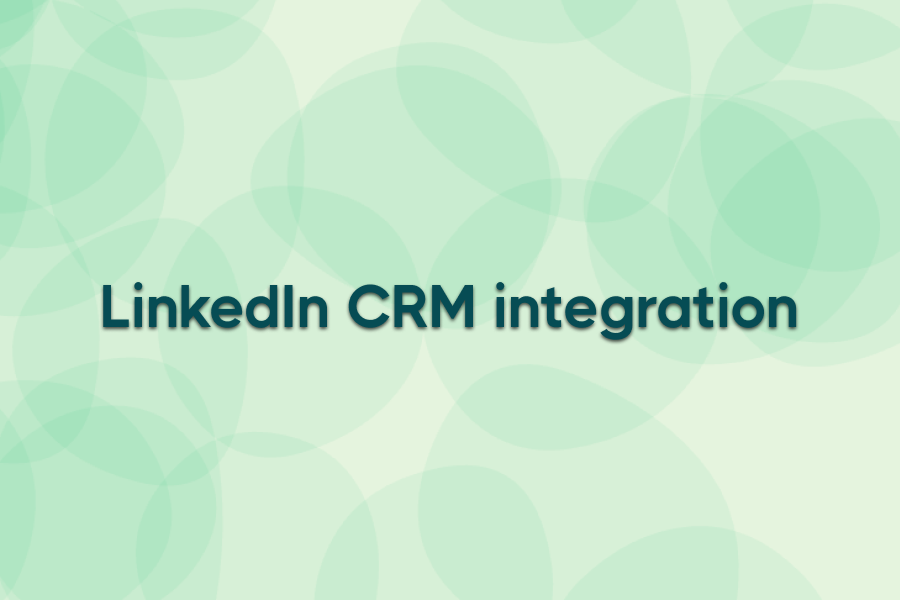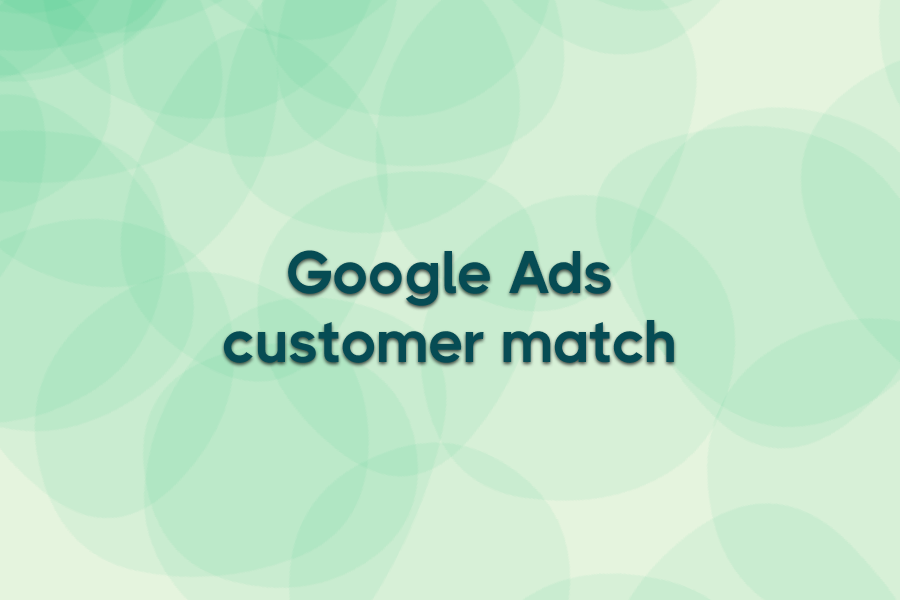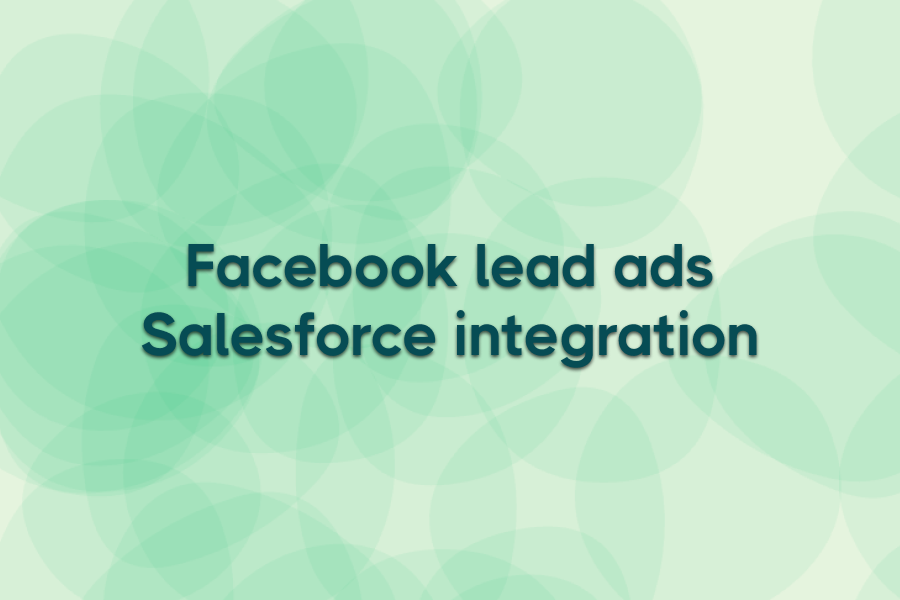Exporting LinkedIn leads and manually uploading them to your CRM wastes time—and lets warm prospects cool off.
A LinkedIn CRM integration sends leads from LinkedIn Lead Gen Forms straight into Salesforce and other CRM or marketing automation tool in real time. With Ads Workbench’s new LinkedIn integration, you can build instant lead flows—just like with Facebook Lead Ads—so your team acts while interest is highest.
This guide covers how integrations work for top CRMs, key benefits, challenges to avoid, and the best tools to use.
Benefits of integrating LinkedIn with your CRM
Integrating LinkedIn with your CRM isn’t just about convenience—it’s about turning every lead into a timely, well-informed conversation. Here’s what you gain when you make the connection.
Real-time lead capture
When a prospect fills out a LinkedIn Lead Gen Form, a CRM integration pushes their details directly into your database in seconds. No CSV downloads, no waiting for manual uploads. Your sales team can start outreach within minutes, while your brand is still top-of-mind. With Ads Workbench, you can build these real-time flows without coding, ensuring every lead is ready for action the moment they come in.

Different headlines, questions, or field combinations can attract different quality leads. Run A/B tests on your LinkedIn Lead Gen Forms and watch which version produces more qualified leads in your CRM. Ads Workbench will still sync them all in real time, letting you compare results without extra manual work.
Automated data entry
An integration handles the entire data transfer—mapping each field from LinkedIn to the right place in your CRM. This not only prevents errors but also ensures key details like job title, company size, or campaign source are captured accurately. Ads Workbench’s field mapping lets you include extras such as timestamps or campaign names for better reporting later.
Faster, warmer follow-ups
With leads in your CRM instantly, you can trigger automated workflows: assign the lead to the right rep, send a personalized welcome email, or create a follow-up task. Ads Workbench even supports sending Slack or email alerts with the full lead details, so your team knows exactly who to call and why.
A LinkedIn CRM integration turns raw form fills into live sales opportunities—fast. You cut delays, keep data clean, and follow up while prospects are still ready to talk.
LinkedIn CRM integrations guide
Integrating LinkedIn with your CRM isn’t one-size-fits-all. Each platform has its own setup process, limitations, and opportunities to streamline with Ads Workbench. Below, you’ll see a quick breakdown for four of the most common CRMs—HubSpot, Salesforce, Zoho CRM, and Pipedrive—so you can get connected fast. We’ll also look at each of these in more detail later in the article.
HubSpot
How to integrate:
- In HubSpot, connect your LinkedIn Ads account under Marketing → Ads.
- Select your active Lead Gen Forms.
- Map each LinkedIn field to the right HubSpot property.
- Test the connection by submitting a form.
Native HubSpot syncs can have short delays and limited mapping options. Ads Workbench delivers leads instantly, supports advanced field mapping (e.g., campaign IDs, timestamps), and can trigger Slack/email alerts for new submissions.
Salesforce
How to integrate:
- Use Salesforce’s LinkedIn Lead Gen integration via the LinkedIn Advertising API or a connector tool.
- Authenticate your LinkedIn Ads account.
- Map LinkedIn fields to Salesforce lead or contact objects.
- Assign routing rules within Salesforce.
Native Salesforce options often require extra middleware or dev time. Ads Workbench pushes LinkedIn leads directly into the right object in real time, bypassing complex setup while preserving full field mapping.
Many marketers lose visibility into which LinkedIn campaign actually generated the lead once it’s in the CRM. With Ads Workbench’s field mapping, you can include campaign IDs or names as hidden fields, making it easy to pull revenue reports by campaign later.
Zoho CRM
How to integrate:
- Install Zoho’s LinkedIn Ads extension from Zoho Marketplace.
- Connect your LinkedIn Ads account.
- Link your Lead Gen Forms and map fields to Zoho CRM fields.
- Activate workflows for lead assignment.
The native integration can miss advanced routing and segmentation. Ads Workbench lets you segment leads by criteria (e.g., company size) before they hit Zoho, so they’re already tagged and assigned correctly.

Pipedrive
How to integrate:
- No native LinkedIn Lead Gen sync exists—start with Ads Workbench.
- In Ads Workbench, connect both LinkedIn and Pipedrive.
- Map LinkedIn form fields to Pipedrive’s lead fields.
- Set up alerts or automations in Pipedrive to act on new leads.
The right setup ensures every LinkedIn lead lands in the right place, in the right format, and ready for action. Whether your CRM has native support or not, Ads Workbench fills the gaps so your follow-ups stay fast and consistent.
Common LinkedIn CRM integration challenges
Even with a native LinkedIn connection, syncing data into your CRM isn’t always smooth. If you’re an ad manager handling high-volume campaigns, you’ve probably hit at least one of these roadblocks.
Delayed lead delivery
Many native integrations pull new LinkedIn leads into your CRM in hourly or daily batches. If you’re running paid campaigns, that’s a killer—your sales team could be calling leads who filled out a form yesterday, not minutes ago. By then, the prospect may have forgotten your offer or been contacted by a competitor.
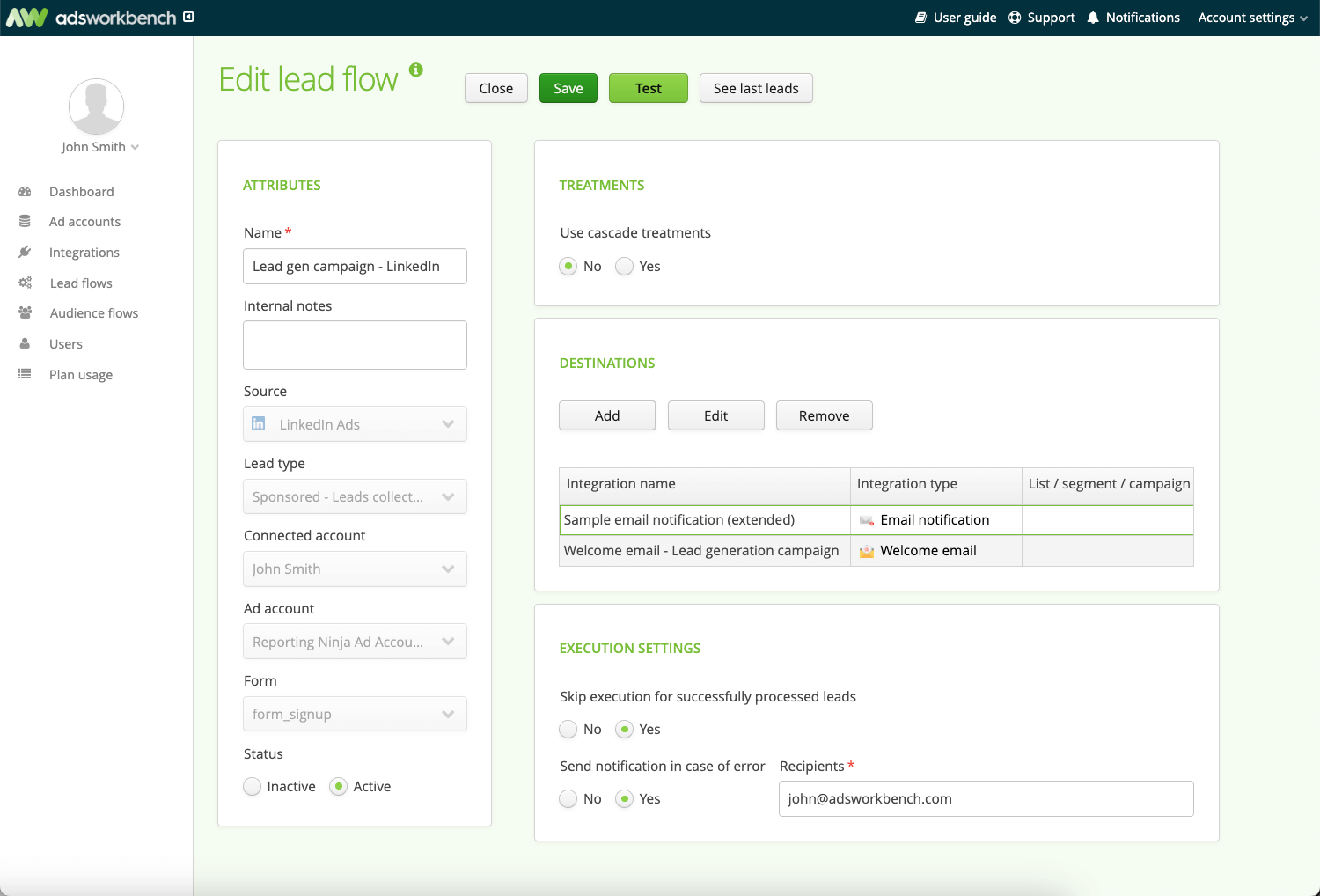
Incomplete or misaligned data
LinkedIn form fields don’t always match your CRM fields one-to-one. Without precise mapping, you can end up missing key details like job title, phone number, or company size—or have them dumped into generic “Notes” fields that no one reads. Over time, this erodes data quality, making segmentation and reporting unreliable.
Limited segmentation and routing
Native integrations often treat all LinkedIn leads the same. That means leads from enterprise accounts and small businesses land in the same list, forcing sales to manually filter before acting. For high-volume campaigns, this slows everything down and risks sending the wrong message to the wrong prospect.
Overcomplicated setup
Some LinkedIn CRM integrations require middleware tools, developer API work, or multiple connected apps just to get the basics running. This complexity slows implementation, introduces more points of failure, and makes troubleshooting a nightmare.
The most common integration headaches—slow delivery, poor data quality, lack of routing, and complex setup—are exactly the problems Ads Workbench was built to solve. By fixing these at the source, you get a lead flow that’s fast, accurate, and tailored to how your team works.
Best LinkedIn CRMs
Choosing the right CRM for your LinkedIn lead flow depends on your team size, sales process, and automation needs. Here are four popular options, with their standout features, pricing, and pros/cons.
HubSpot
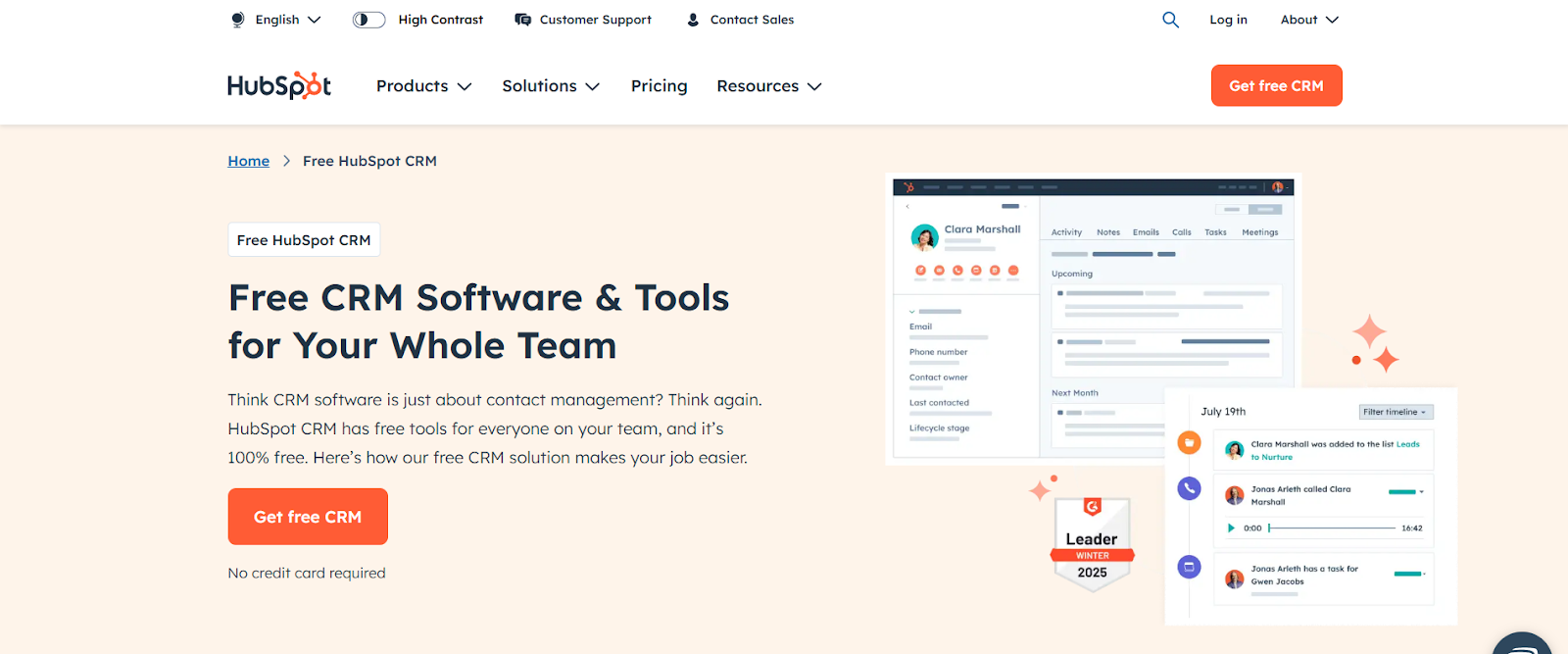
HubSpot is a popular choice for marketing and sales teams that want an all-in-one CRM with strong automation and native LinkedIn Ads integration.
Pricing
Free plan available; paid plans from $9/user/month (if paid annually).
Key features
- Native LinkedIn Lead Gen Forms integration
- Marketing automation and email sequencing
- Detailed contact timelines and deal tracking
- Built-in reporting and analytics
Pros
- Easy to set up and use
- Strong marketing automation tools
- Good free tier for small teams
Cons
- Higher-tier plans can get expensive
- Limited customization without paid add-ons
Salesforce
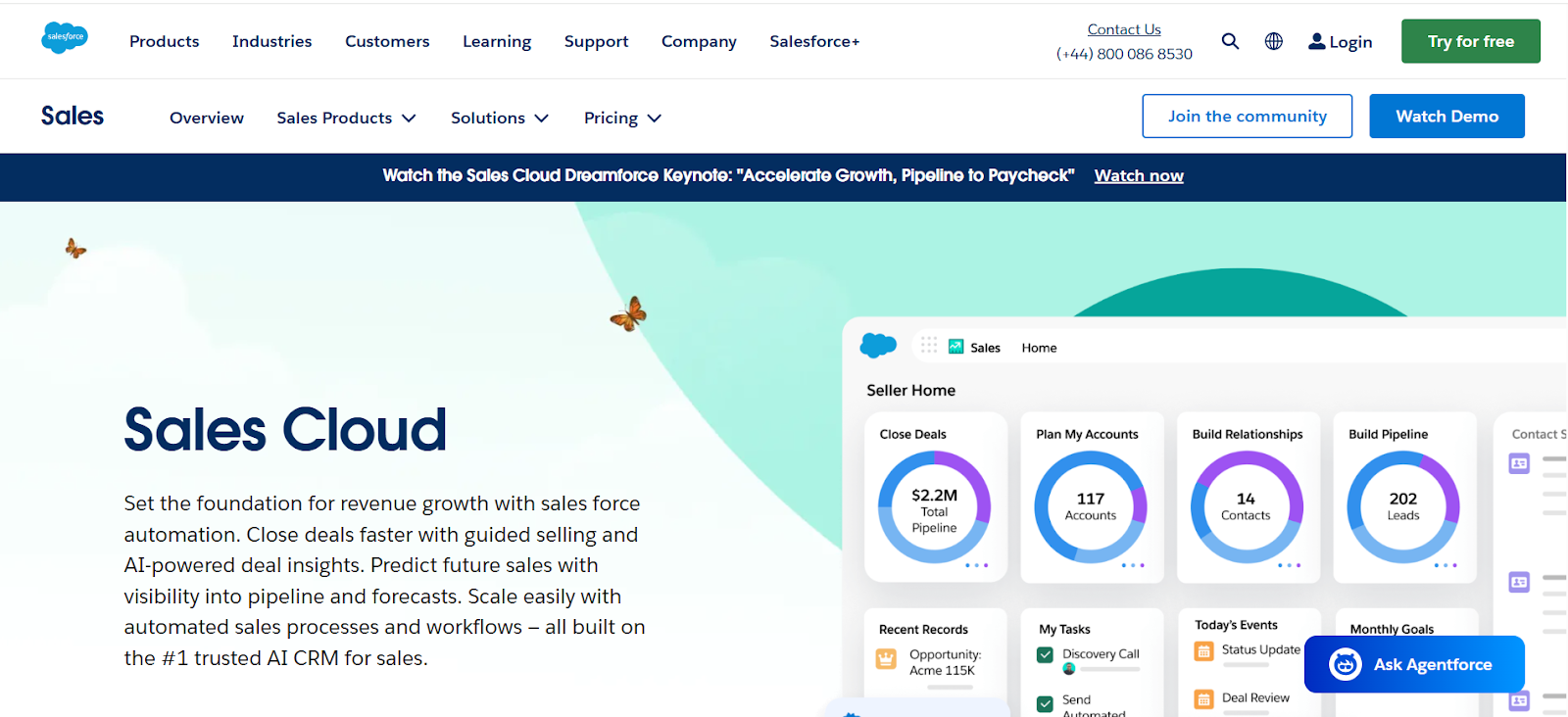
Salesforce is known for its deep customization and scalability, making it ideal for large or complex sales teams.
Pricing
From $25/user/month (Essentials).
Key features
- Robust API for custom LinkedIn integrations
- Advanced reporting and analytics
- Extensive automation and workflow rules
- Large marketplace of third-party apps
Pros
- Extremely customizable
- Scales well for enterprise needs
- Strong ecosystem of integrations
Cons
- Steep learning curve
- Often requires admin/developer support
Zoho CRM
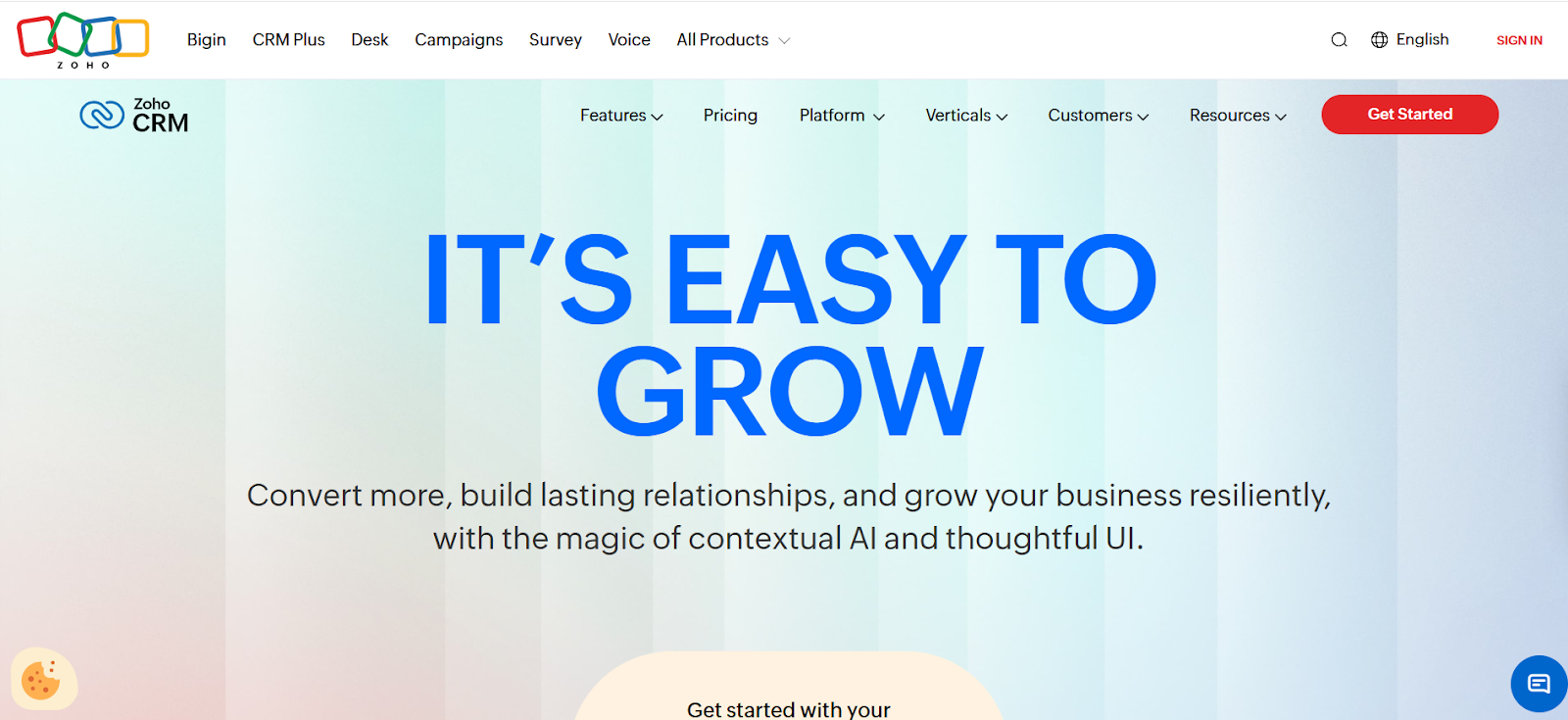
Zoho CRM offers a balance of affordability and functionality, with a wide range of sales, marketing, and automation tools.
Pricing
The free plan allows up to three users. Paid plans strat from $14/user/month.
Key features
- LinkedIn Ads extension for lead capture
- Multichannel communication tools (email, phone, social)
- AI-powered lead scoring and forecasting
- Highly customizable fields and workflows
Pros
- Competitive pricing
- Flexible customization for small to mid-sized teams
- Built-in multichannel engagement
Cons
- Interface can feel dated compared to competitors
- Some advanced features require higher-tier plans
Pipedrive
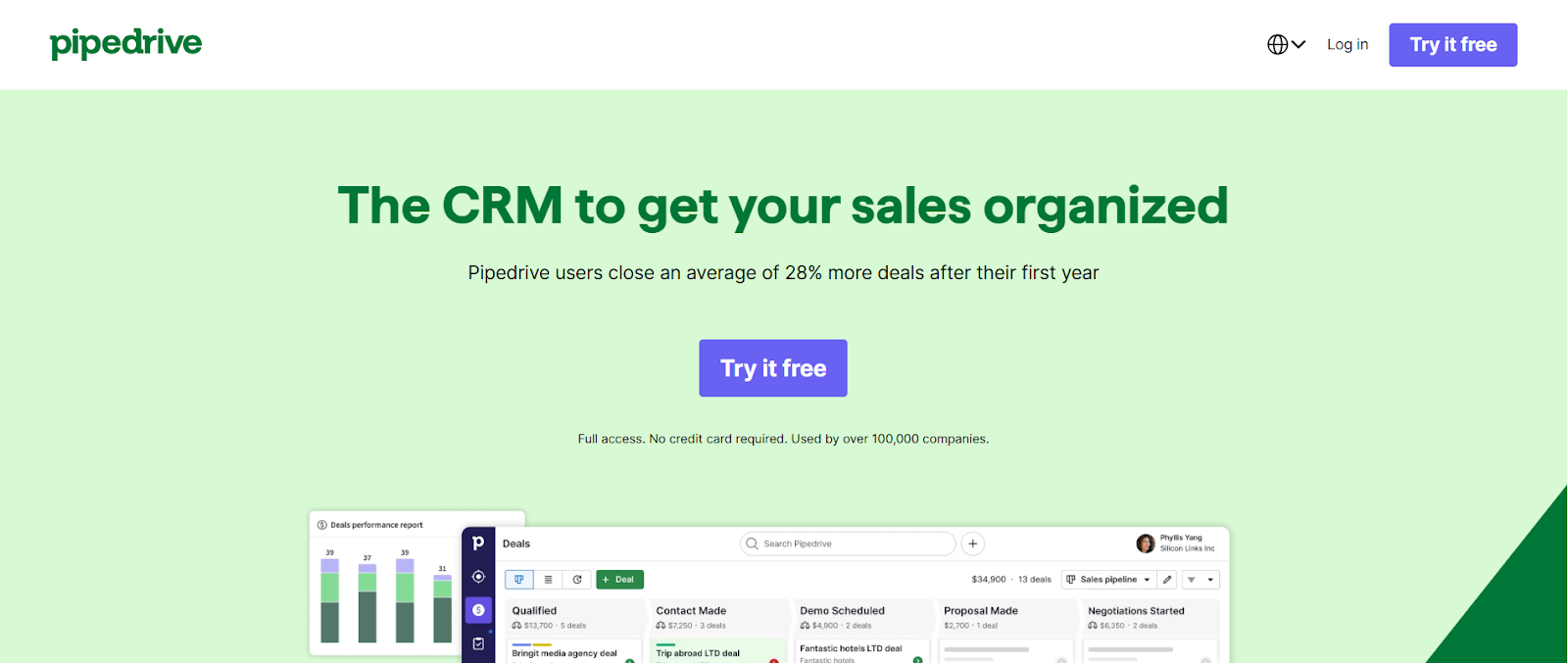
Pipedrive is a sales-focused CRM that’s easy to use, making it popular with small to mid-sized teams.
Pricing
From $14/user/month (Essential).
Key features
- Visual pipeline management
- Simple API connections for LinkedIn via tools like Ads Workbench
- Customizable stages and fields
- Built-in email tracking and templates
Pros
- Very user-friendly interface
- Quick setup with minimal training
- Affordable entry-level plans
Cons
- Lacks native LinkedIn integration
- Limited marketing automation compared to HubSpot or Salesforce
Whether you choose a feature-rich platform like Salesforce or a simple, sales-focused option like Pipedrive, Ads Workbench can bridge any integration gaps and keep your lead flow instant, accurate, and actionable.
Simplify LinkedIn lead management with the right CRM integration
The gap between capturing a lead and acting on it is where deals are won—or lost. A strong LinkedIn CRM integration closes that gap, giving your team the speed, accuracy, and context to respond when it matters most.
With Ads Workbench’s LinkedIn Lead Gen Forms sync, you can build real-time lead flows into any major CRM, map every detail exactly where you want it, and route each lead to the right place automatically.
No CSVs, no delays, no guesswork—just a direct path from ad click to meaningful conversation.
The real question isn’t whether you should integrate LinkedIn with your CRM. It’s how much business you’re leaving on the table until you do.
Ready to see how much faster your LinkedIn leads can turn into revenue?

